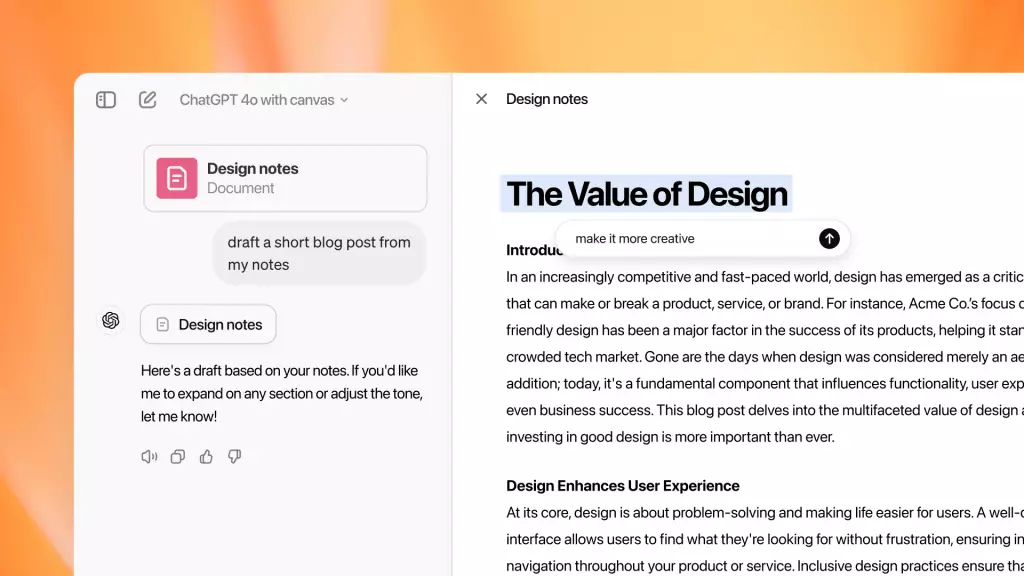In a recent livestream event celebrating the “12 Days of OpenAI,” the company announced an exciting expansion of its digital editing platform, Canvas. This innovative tool, which provides a user-friendly space for editing alongside ChatGPT, is now available to all users, moving beyond just the paying clientele. With its recent enhancements, Canvas aims to redefine how users interact with artificial intelligence, fostering creativity and efficiency in content creation.
Canvas has transformed the traditional layout of ChatGPT by introducing a unique, side-by-side editing experience. By placing the conversation interface on the left and the editing space on the right, this arrangement allows users to engage in a more dynamic workflow. Instead of the usual back-and-forth Q&A format, changes requested by the user now manifest immediately in the editing area. This real-time feedback is particularly beneficial for tasks involving coding or text editing, where precision and immediate iteration are essential.
One of the standout features of the Canvas is its capability to suggest text and code modifications seamlessly. Users can simply speak or type their requests, and Canvas will intuitively provide suggestions without requiring a separate command. This feature is especially valuable for professionals in fields like software development or digital content creation, where quick adjustments can significantly improve productivity.
Moreover, the integration of Python code execution within Canvas is a groundbreaking step. Previously, users had to manually transfer code from ChatGPT to their development environments to see results. Now, with the ability to run code directly in the Canvas, users can visualize outputs, making problem-solving and troubleshooting more interactive and intuitive. This advancement positions Canvas as a formidable competitor to existing platforms like Anthropic’s Claude Artifacts, which has been known for similar functionalities.
For users interested in customizing their experience, OpenAI has ensured that Canvas can be integrated into custom GPTs. This gives developers greater control over how and when Canvas activates, allowing for a tailored experience based on individual project requirements. Importantly, OpenAI has chosen to avoid making Canvas a default feature for existing custom setups to maintain stability for users who rely on those previous configurations.
The recent updates to Canvas signify a noteworthy evolution in OpenAI’s commitment to enhancing user interaction with AI. By enabling real-time editing, seamless suggestions, and Python code execution, Canvas not only streamlines the workflow for professionals but also expands the creative potential of its users. As we witness these developments, it’s clear that OpenAI continues to innovate, shaping the future of how we utilize artificial intelligence in everyday tasks. The wide availability of Canvas heralds a new era of collaborative creativity, empowering users to go beyond traditional boundaries in their endeavors.


Leave a Reply